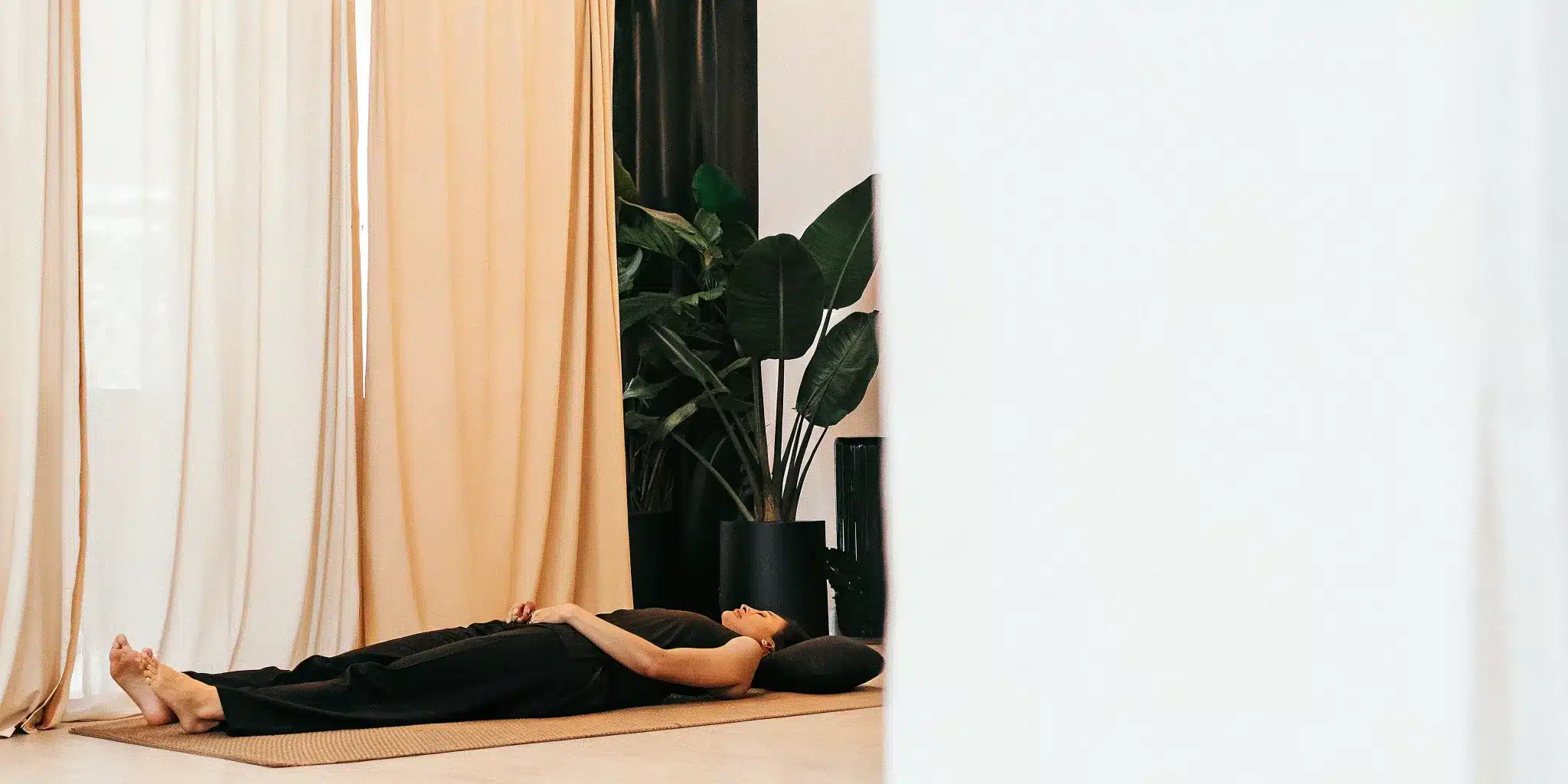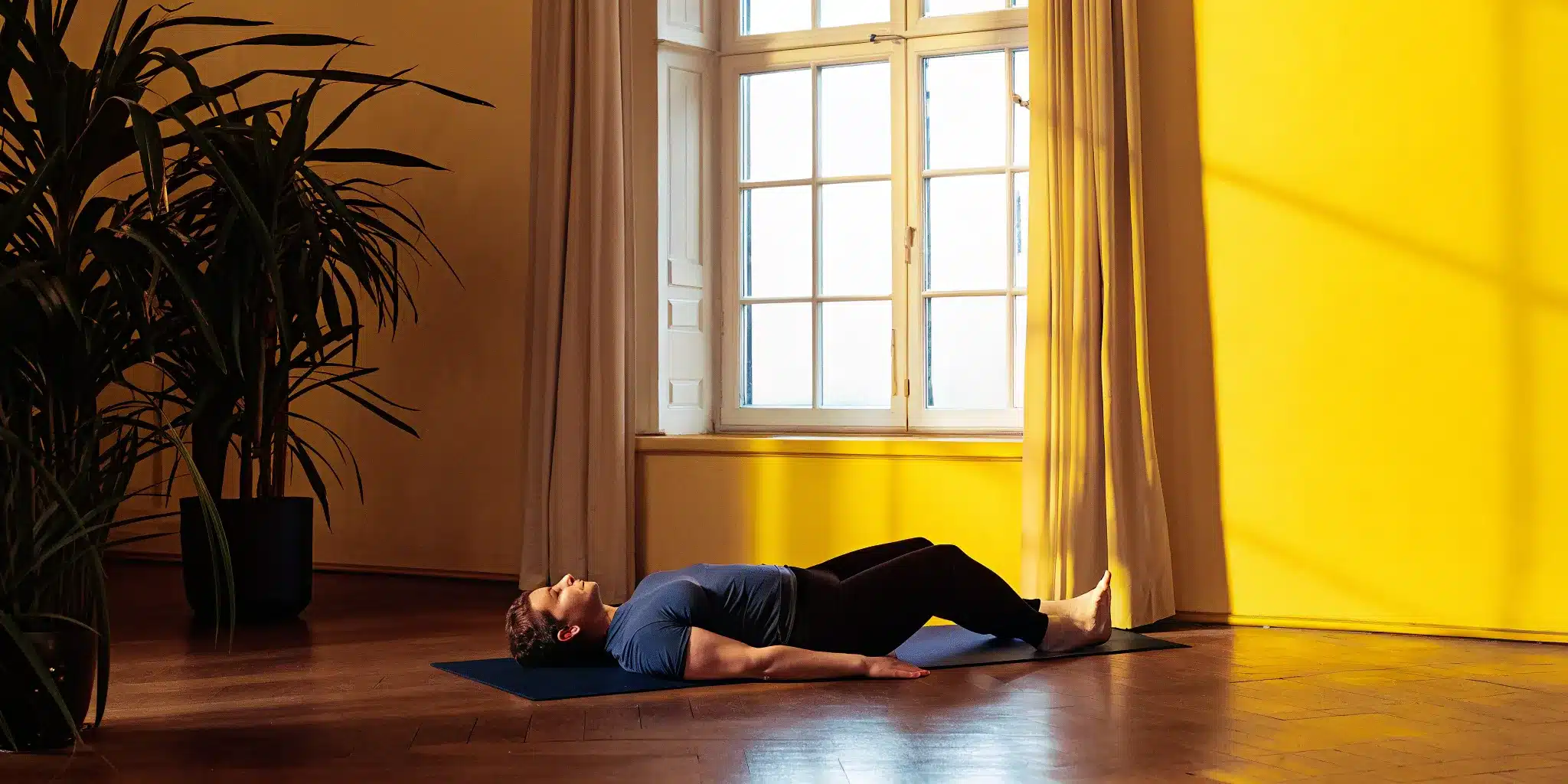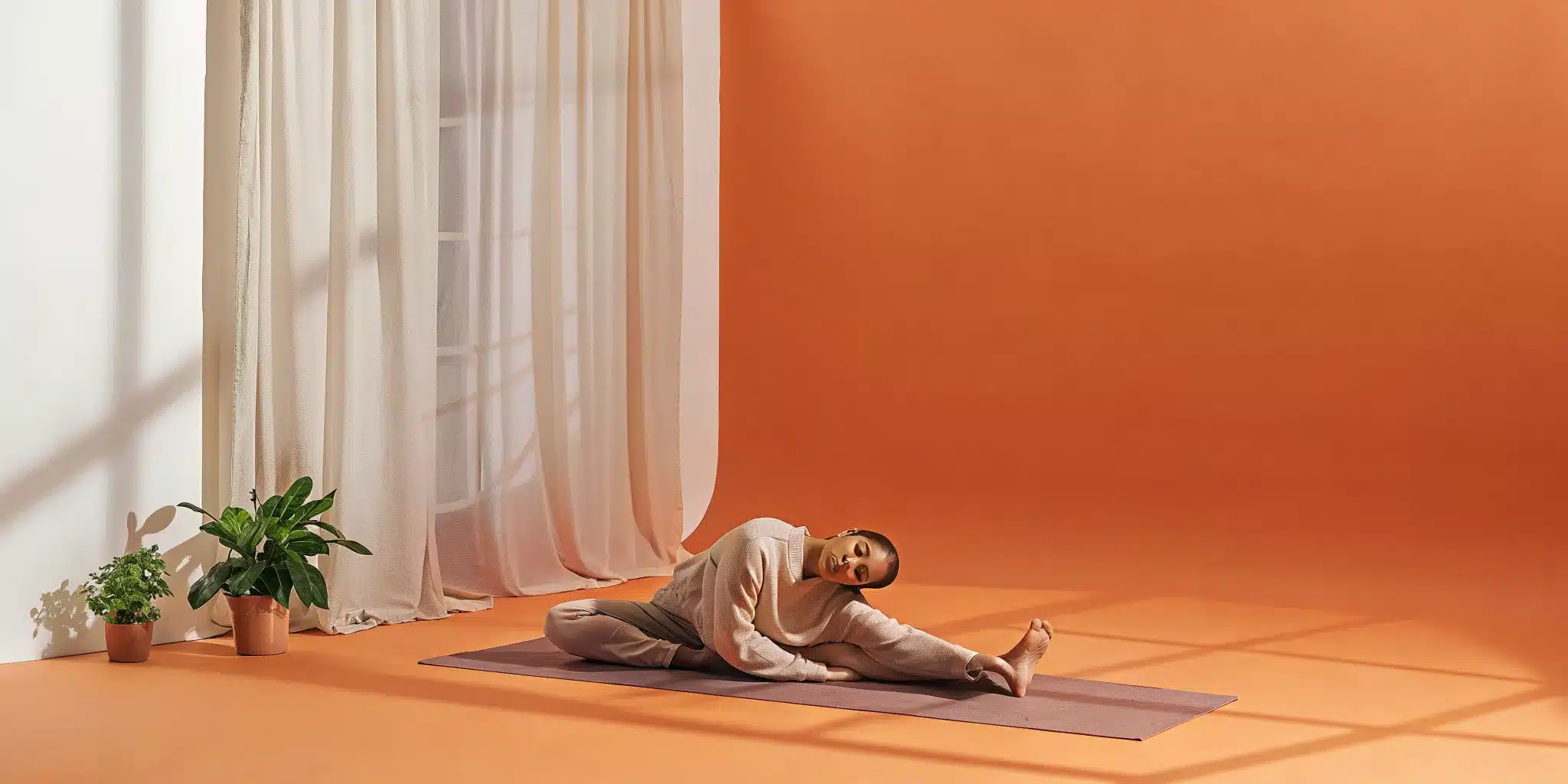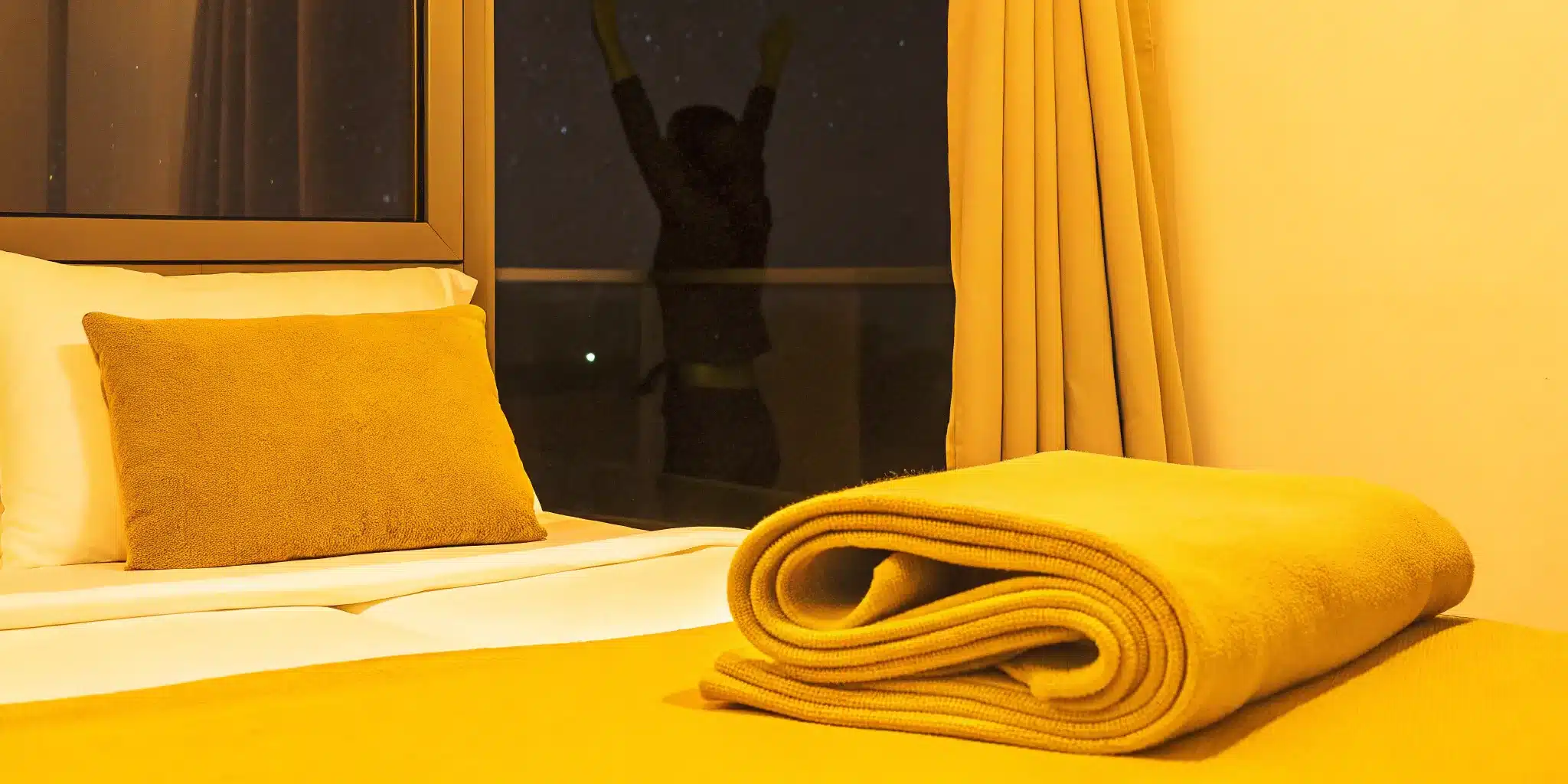For anyone living with chronic tightness, the idea of stretching can feel like a battle against your own body. You try to lengthen a muscle, and it just tenses up in response. PNF stretching offers a different approach. It’s a therapeutic technique that helps retrain the communication between your brain and your muscles, teaching them to release instead of guard. By using a gentle contract-and-relax cycle, PNF helps to calm the protective reflexes that keep your muscles locked in a state of tension. We’ll explore what is PNF and how it can be a game-changer for managing pain, restoring mobility, and finding lasting relief from stiffness.
Key Takeaways
- PNF works with your body, not against it: This technique uses a contract-and-relax sequence to convince your nervous system to allow a deeper, more effective stretch, making it a smarter approach than just holding a static position.
- It delivers more than just flexibility: The active muscle contractions involved in PNF also build functional strength, which helps improve performance, stabilize joints, and support your body’s recovery from chronic pain or injury.
- Safety and proper form are non-negotiable: Because PNF is an advanced technique, working with a trained professional is the best way to learn. Always warm up first and listen to your body—a deep stretch is good, but sharp pain is a signal to stop.
What is PNF Stretching?
If you’ve ever felt like you’ve hit a wall with your flexibility, PNF stretching might be the breakthrough you’re looking for. It’s a more advanced form of flexibility training that goes beyond the typical “reach and hold” static stretches you probably learned in gym class. PNF techniques are designed to improve both your flexibility and your range of motion by combining passive stretching with gentle muscle contractions.
Think of it as a way to have a conversation with your muscles. Instead of just pulling on a muscle to lengthen it, PNF involves a specific sequence of contracting, holding, and relaxing that encourages your nervous system to allow a deeper, more effective stretch. It’s a powerful method used by physical therapists, athletes, and anyone looking to move more freely and with less pain. Because it works with your body’s natural responses, it can often produce noticeable results faster than static stretching alone. While the name sounds technical, the concept is surprisingly straightforward once you understand the basics. It’s a key technique for anyone who feels that their progress has stalled or that simple stretching just isn’t cutting through their chronic tightness.
What Does “PNF” Actually Stand For?
Let’s break down the name, because it perfectly explains what’s happening in your body. PNF stands for Proprioceptive Neuromuscular Facilitation. It’s a mouthful, but each word has a simple job:
- Proprioceptive: This refers to proprioception, which is your body’s ability to sense its own position, movement, and actions. Think of it as your internal GPS system that tells you where your limbs are without you having to look.
- Neuromuscular: This simply means it involves both your nerves (neuro) and your muscles (muscular). It’s all about the communication pathway between your brain and your muscles.
- Facilitation: This just means “to make easier.”
So, PNF is a technique that uses your body’s nerve-and-muscle communication system to make stretching easier and more effective.
Where Did PNF Stretching Come From?
PNF stretching wasn’t originally developed for gym-goers or yogis. Its roots are in clinical rehabilitation. In the 1940s, physical therapists created these techniques to help patients, particularly those recovering from paralysis and other nerve-related conditions, regain movement and muscle control. They discovered that by using these specific contract-and-relax sequences, they could help patients re-establish the connection between their brain and muscles.
Over time, the incredible effectiveness of PNF for increasing flexibility became clear. Athletes, trainers, and fitness professionals began adopting the techniques to improve performance and mobility. Its origin in physical therapy is a testament to its safety and power when performed correctly.
The Science: How PNF Rewires Your Body
So, how does PNF convince your muscles to relax and lengthen more than they normally would? It all comes down to working with your body’s protective reflexes, not against them. When you stretch a muscle, tiny sensors in the muscle and tendon send signals to your brain to prevent you from overstretching and causing an injury. This is why you feel that tension and resistance.
PNF works by interrupting that signal. By first contracting the muscle you’re about to stretch, you trigger a reflex called autogenic inhibition. This is a fancy term for a simple process: after a strong contraction, your nervous system tells the muscle to temporarily relax and “let go.” It’s in that brief window of relaxation that you can achieve a much deeper and more productive stretch, safely rewiring the connection between your brain and muscles.
How Does PNF Stretching Actually Work?
If you’ve ever tried to stretch a tight muscle, you know that feeling when your body just says, “Nope!” and tenses up. It’s a protective reflex. PNF stretching is a clever way to work with your body’s nervous system, not against it. Think of it as a conversation between your brain and your muscles. By contracting a muscle right before you stretch it, you’re essentially sending a message to your brain that it’s safe to relax and let go. This little trick allows the muscle to release more than it would with a simple static stretch, leading to bigger gains in flexibility and mobility. It’s a smarter, more effective way to lengthen your muscles and ease tension.
How Your Muscles React to PNF
At its core, PNF is a method designed to make your muscles more flexible and increase your joint’s range of motion. It’s a technique frequently used in physical therapy and athletic training to help people recover from injuries and improve their physical performance. Instead of just pulling on a muscle and holding it, PNF involves a series of contractions and relaxations. This active approach helps retrain your muscles and the nerves that control them. By engaging the muscle first, you tire it out slightly, which makes it more receptive to a deeper, more effective stretch immediately afterward.
Unlocking Your Body’s “Position Sensors”
Inside your muscles and tendons, you have tiny, brilliant sensors called Golgi tendon organs, or GTOs. Think of them as your body’s “position sensors.” Their job is to detect changes in muscle tension and help prevent injury by telling an overworked muscle to relax. PNF stretching intentionally activates these sensors. When you contract your muscle against resistance during a PNF stretch, the GTOs sense the increased tension and send a signal to your brain. In response, your brain sends a message back telling the muscle to release. This process, called autogenic inhibition, allows for a much deeper and safer stretch.
How PNF Helps Manage Pain Signals
For anyone dealing with chronic pain or tightness, the idea of pushing a stretch can be intimidating. This is where PNF truly shines. It does more than just physically lengthen your muscles; it helps change your brain’s perception of the stretch. Research shows that PNF stretching increases your “stretch tolerance.” Essentially, it helps recalibrate how your brain interprets pain signals from a tight muscle. By teaching your nervous system that a deeper range of motion is safe, you can stretch further with less discomfort. It’s a gentle way to expand your comfort zone and find relief.
Teaching Your Brain and Muscles to Relax
The magic of PNF lies in the contract-and-relax cycle. This sequence triggers specific neurological responses that allow your muscles to lengthen more effectively. When you actively engage a muscle and then consciously let it go, you’re creating a window of opportunity where the muscle is primed for release. It’s a powerful way to interrupt the cycle of chronic tightness where muscles are constantly “on.” Over time, this process helps your brain and muscles learn a new pattern—one of release and relaxation instead of tension and guarding. It’s not just about temporary flexibility; it’s about creating lasting change in your body.
Key PNF Stretching Techniques to Know
PNF stretching isn’t a single move but a collection of techniques that use your body’s reflexes to deepen a stretch. While they might sound complicated, the concepts are quite simple once you break them down. Think of them as different ways to communicate with your muscles, asking them to relax and lengthen. Understanding these core methods can help you appreciate what’s happening during an assisted stretch session and why it feels so effective. Each technique has a slightly different approach, but they all share the goal of helping you achieve a greater range of motion safely.
The Contract-Relax Method
This is one of the most common PNF techniques. It starts with your practitioner gently stretching a target muscle to the point of light tension. You’ll hold that position, and then you’ll be asked to contract that same muscle against their resistance for several seconds—without actually moving. After the contraction, you relax, and the practitioner will guide you into a deeper stretch. This contract-relax cycle essentially tricks the muscle’s protective reflexes, allowing it to lengthen more than it would with a simple static stretch. It’s a powerful way to improve flexibility and ease into a greater range of motion.
The Hold-Relax Method
The Hold-Relax method is very similar to the Contract-Relax technique, but with a subtle difference. It begins with the same gentle, passive stretch. Then, you’ll perform an isometric contraction, meaning you’ll tighten the stretched muscle without any movement. You hold this tension for a few seconds before completely relaxing. As you relax, the muscle releases, allowing for an increased range of motion on the next passive stretch. This method is excellent for targeting specific muscles and overcoming tightness by activating reflexes that encourage the muscle to let go and lengthen.
The Hold-Relax with Antagonist Contraction Method
Often called CRAC (Contract-Relax, Antagonist-Contract), this technique adds an extra step for even greater effectiveness. After performing the hold-relax portion, you actively contract the opposite muscle (the antagonist) to pull yourself deeper into the stretch. For example, if you’re stretching your hamstring (the target muscle), you would then contract your quadriceps (the antagonist). This action, called reciprocal inhibition, sends a signal to your hamstring to relax even further, making this one of the safest and most effective PNF approaches.
Rhythmic Stabilization
This technique focuses more on stability and coordination than just flexibility. It involves alternating contractions between the agonist (the muscle being stretched) and the antagonist (the opposing muscle) without letting them relax in between. Your practitioner will provide resistance as you switch between pushing and pulling motions. This rapid firing of opposing muscle groups helps improve joint stability, body awareness, and neuromuscular control. It’s a fantastic way to build functional strength and teach muscle groups to work together more efficiently, which is crucial for both daily movement and athletic performance.
Partner-Assisted vs. Solo PNF Stretching
While some PNF stretches can be adapted for solo practice using a strap or towel, they are most effective and safest when performed with a trained partner. A professional can provide the precise resistance needed, ensure you’re using proper form, and guide you to a depth that is both effective and safe. They can also monitor your body’s feedback and adjust the stretch accordingly. This hands-on guidance helps prevent injury and ensures you get the maximum benefit from every movement, which is why assisted stretching is the gold standard for PNF.
What Are the Benefits of PNF Stretching?
So, why is PNF stretching creating such a buzz? It’s because the benefits go far beyond just becoming more flexible. This technique is a powerful tool for rewiring how your muscles and brain communicate, leading to some pretty incredible results for your entire body. Think of it as a system upgrade for your movement. Whether you’re an athlete looking for a competitive edge, someone recovering from an injury, or you simply want to move through your day with less stiffness and more ease, PNF has something to offer. It’s about building a more resilient, capable, and comfortable body from the inside out.
Gain More Flexibility and Range of Motion
This is the benefit PNF is most famous for, and for good reason. If you feel like your body is fighting you on simple movements—like reaching for something on a high shelf or bending down to tie your shoes—PNF can make a world of difference. It’s considered one of the most effective ways to see significant gains in range of motion (ROM), often much faster than with traditional static stretching. By using your body’s own reflexes, PNF helps convince your nervous system to release its grip on tight muscles, allowing them to lengthen safely. This means you can achieve a deeper, more effective stretch, unlocking new levels of flexibility in your joints and muscles.
Build Functional Strength
Stretching to get stronger? It might sound counterintuitive, but PNF does exactly that. Because the technique involves actively contracting your muscles against resistance before you stretch them, you’re essentially performing a mini-workout. This process helps strengthen the muscles being targeted. This isn’t about building bulk; it’s about developing functional strength—the kind you use every day to carry groceries, play with your kids, or maintain good posture at your desk. By strengthening muscles through their full range of motion, you create more stability around your joints, which can be a game-changer for preventing injuries and reducing chronic pain. It helps your body become more coordinated and resilient for whatever life throws your way.
Improve Your Athletic Performance
For anyone who loves to move, PNF can be a secret weapon. Improved flexibility and strength naturally lead to better athletic performance. When your joints can move more freely, you can generate more power and efficiency in your movements. Think about it: a golfer can achieve a longer backswing, a runner can develop a more powerful stride, and a tennis player can reach for a wide shot with greater ease. Studies show that PNF can lead to immediate improvements in performance, helping you move with more grace and power. It’s not just for professional athletes; weekend warriors and fitness enthusiasts alike can use PNF to perform better and enjoy their favorite activities even more.
Support Recovery and Rehabilitation
There’s a reason why physical therapists and rehabilitation specialists have used PNF for decades. It’s an incredibly effective tool for helping people recover from injuries and manage chronic conditions. Because it can be precisely controlled, PNF is excellent for targeting specific muscle groups that have been weakened or immobilized. The technique helps re-establish the connection between your brain and your muscles, safely reintroducing movement and building strength in injured areas. For those dealing with chronic pain or stiffness, PNF can help restore normal muscle function and improve overall mobility. It’s a gentle yet powerful way to support your body’s natural healing process and get you back to doing what you love.
Is PNF Stretching Right for You?
PNF stretching is a versatile tool that can benefit a wide range of people, from dedicated athletes to those simply looking to move with less pain. Because it’s an advanced technique, its application can look different depending on your personal goals, fitness level, and overall health. Understanding if it’s a good fit for your specific situation is the first step toward unlocking its benefits. Let’s explore who can gain the most from PNF and when it’s important to proceed with a little extra care.
For Athletes and Fitness Lovers
If you’re active in sports or dedicated to your fitness routine, PNF stretching can be a game-changer. It’s a powerful technique for improving flexibility and increasing your range of motion far more effectively than static stretching alone. This not only helps you perform better—think deeper squats or a more fluid golf swing—but it also plays a huge role in injury prevention. By improving muscle strength and stability, PNF helps you achieve your functional goals safely. Whether you’re a weekend warrior or a competitive athlete, incorporating PNF can help keep your body resilient and ready for action.
For Those in Rehabilitation
If you’re recovering from an injury or managing a chronic condition, PNF can be an incredibly effective part of your rehabilitation plan. It’s particularly good at targeting specific muscle groups to restore both active and passive range of motion. Over time, this kind of focused stretch therapy can lead to healthier movement patterns and a lower risk of future injuries. By re-establishing the connection between your brain and muscles, PNF helps improve muscular function and strength, making it a valuable tool for anyone on the road to recovery.
PNF Stretching at Different Life Stages
Flexibility isn’t just for athletes; it’s a cornerstone of healthy aging. As we get older, our muscles and joints can become stiff, limiting our mobility and quality of life. PNF stretching is a fantastic way to combat this. Research shows that older adults can significantly improve their range of motion with assisted stretching techniques. Maintaining muscle flexibility is crucial for maintaining joint health, which helps you continue doing the activities you love, whether that’s gardening, playing with grandkids, or simply moving through your day with ease and comfort.
When to Be Cautious with PNF
While PNF is highly effective, it’s not for everyone right out of the gate. This is an advanced form of stretching, and if you’re brand new to exercise, it’s best to start with the basics. Because of its intensity, there’s a risk of overstretching or injuring your muscles if you do PNF incorrectly. This is why learning from a professional is so important. A trained stretch therapist can guide you through the movements safely, ensuring you get all the benefits without the risks. They can tailor the stretches to your body’s specific needs and teach you the proper form.
How to Practice PNF Stretching Safely
PNF stretching is a powerful tool, but because it involves actively contracting and relaxing your muscles at their limit, safety is everything. Approaching it with care ensures you get all the benefits—like better flexibility and less pain—without the risk of injury. Think of it as a conversation with your body; you need to listen carefully to what it’s telling you. These tips will help you have a productive and safe chat with your muscles every time you stretch.
Why You Should Work with a Professional
Because PNF is a more advanced stretching technique, it’s not something you should jump into without guidance, especially if you’re new to stretching or managing an injury. The best way to get started is to learn from a physical therapist or a certified stretch practitioner. A professional can show you the correct form, tailor the stretches to your specific needs, and make sure you’re performing each step correctly. They act as your guide, helping you understand the difference between a deep, effective stretch and one that’s pushing your body too far. This initial investment in professional guidance pays off by building a safe and effective foundation for your stretching routine.
Common Mistakes to Avoid
The most common mistake with PNF stretching is simply trying too hard. It’s easy to get enthusiastic about making progress, but pushing past your body’s signals can do more harm than good. If you perform the movements incorrectly, you can overstretch or injure your muscles. Remember, the goal isn’t to force your muscles into a new range of motion but to gently coax them. Avoid jerky movements and listen for any sharp pain—that’s your cue to back off immediately. Another pitfall is not warming up properly. Always start with a few minutes of light cardio, like walking or jogging, to get your blood flowing before you begin.
What You’ll Need (Hint: Not Much!)
One of the best things about PNF stretching is that you don’t need a home gym full of expensive equipment to do it. All you really need is a comfortable spot on the floor with enough space to move. While many PNF techniques require a partner to provide resistance, you aren’t out of luck if you’re practicing alone. For some stretches, you can use a wall, a sturdy piece of furniture, or simple tools like a yoga strap or even a towel to create the necessary tension. This makes PNF an accessible and convenient option, whether you’re at home or at the gym.
Tips for Stretching with a Partner
If you are working with a partner, communication is non-negotiable. Your partner can’t feel what you’re feeling, so you need to be vocal. Tell them when the pressure is just right, when you need more, and most importantly, when to stop. A good partner listens and responds to your feedback, never forcing a stretch. Before you try PNF with a friend or family member, it’s a great idea for both of you to talk to a physical therapist or trainer. They can demonstrate the proper techniques so your partner understands their role and how to assist you safely and effectively.
The Importance of Proper Breathing
Never hold your breath while stretching! Your breath is one of the most powerful tools you have for deepening a stretch safely. Focusing on your breathing helps calm your nervous system and signals your body that it’s okay to release tension. When you’re in the relaxation phase of a PNF stretch, take a long, slow exhale. Try to visualize the muscle letting go as you breathe out. This simple act of mindful breathing can significantly help your muscles relax more fully, allowing you to achieve a deeper and more effective stretch without forcing it. It connects your mind to the movement, making the entire practice more restorative.
Build Your Own PNF Stretching Routine
Ready to put PNF stretching into practice? Creating a routine that works for you is the key to seeing real, lasting change in your flexibility and mobility. While working with a trained professional is the safest and most effective way to perform PNF, understanding the principles behind a good routine can help you get more out of your sessions and support your progress at home. The goal isn’t to push through pain but to communicate with your body and gently expand what feels possible.
Think of this as a framework for building a smarter stretching habit. It’s about consistency, listening to your body’s signals, and celebrating small wins along the way. A successful routine isn’t about forcing your muscles into submission; it’s about creating a sustainable practice that integrates into your life. When you approach stretching with this mindset, you’re more likely to stick with it long enough to experience profound benefits. With the right approach, you can create a practice that helps you move more freely and feel better in your daily life.
How to Warm Up Correctly
Think of your muscles like a rubber band. If you try to stretch a cold, stiff rubber band, it’s more likely to snap. But if you warm it up in your hands first, it becomes pliable and stretchy. Your muscles work the same way. Never jump straight into PNF stretching with cold muscles. A proper warm-up increases blood flow and prepares your muscle fibers for the work ahead, reducing your risk of injury. You don’t need anything intense; just five to 10 minutes of light cardio like a brisk walk, jogging in place, or using an elliptical is perfect. This simple first step is non-negotiable for a safe and effective stretching session.
How Often and When to Stretch
Consistency is what turns effort into results. To see and maintain an increased range of motion, you should aim to incorporate PNF stretching into your routine at least twice a week. The ideal time to do it is after a workout. Your muscles are already warm and receptive to stretching, which allows you to get a deeper, more effective release. Doing PNF post-exercise helps lengthen the muscles you just worked, aids in recovery, and maximizes flexibility gains. If you’re not working out that day, just be sure to complete a dedicated warm-up before you begin your stretching routine.
How to Make Progress Safely
The golden rule of PNF stretching is to listen to your body. You should feel a deep stretch and tension in the muscle, but never sharp or shooting pain. Pain is your body’s signal to back off. It’s also vital to follow the correct steps for each technique, as the specific sequence of contracting and relaxing is what produces the desired results. This is where guidance from a professional is invaluable. A trained stretch therapist can ensure you’re using proper form, applying the right amount of resistance, and not pushing your body past its safe limit, creating a secure environment for you to make progress.
How to Track Your Improvements
One of the most encouraging things about PNF is that you can often see a noticeable improvement in your range of motion after the very first session. To track your progress, pay attention to how your body feels. Can you reach a little further than before? Does a movement that used to feel tight now feel easier? You can take photos or videos to have a visual record of your starting point. Seeing how far you’ve come is a great motivator. Remember, maintaining these gains requires consistency, so celebrating these early wins can help you stick with your routine for the long haul.
Make Your Results Last
Gaining flexibility is one thing; keeping it is another. To make your results last, focus on creating a balanced routine. It’s important to incorporate a variety of stretches that target all your major muscle groups, from your hamstrings and quads to your shoulders and back. This prevents muscle imbalances, where some muscles become tight while others become weak. Aim to stretch regularly, at least three times per week, to maintain your hard-earned flexibility and keep your body feeling mobile and resilient. A well-rounded and consistent routine is your best strategy for long-term success.
Related Articles
- PNF Stretching Exercises: The Ultimate Guide for Beginners – STRETCHMED
- How to Do PNF Stretching Exercises for Hamstrings – STRETCHMED
Frequently Asked Questions
How is PNF different from the stretching I learned in gym class? The stretching most of us learned in school is called static stretching, where you simply hold a muscle in a lengthened position for a period of time. PNF is much more active. It involves a specific sequence of contracting the muscle against resistance before relaxing and stretching it. This contract-and-relax cycle works with your nervous system to convince the muscle it’s safe to release, allowing for a much deeper and more effective stretch than just holding a pose.
Should PNF stretching hurt? You should feel a deep stretch and tension, but you should never feel sharp or shooting pain. There’s a big difference between the discomfort of a muscle being lengthened to its limit and actual pain that signals a problem. Pain is your body’s way of telling you to stop. This is why working with a trained professional is so valuable—they can help you find that productive edge without pushing you into an unsafe zone.
How soon can I expect to feel a difference? One of the most encouraging things about PNF is that many people feel a noticeable improvement in their range of motion after just one session. Because the technique works directly with your nervous system, the results can be quite immediate. To maintain and build on these gains, consistency is key. Regular sessions help create lasting changes in your muscle length and overall mobility.
Can I do PNF stretching by myself? While some PNF techniques can be adapted for solo practice using a wall or a strap for resistance, they are safest and most effective when performed with a trained partner. A professional can provide the precise amount of resistance, ensure your form is correct, and guide you into a deeper stretch than you could safely achieve on your own. This guidance helps you get the maximum benefit while minimizing any risk of overstretching.
Is PNF only for serious athletes? Not at all. While athletes have used PNF for decades to improve performance, its benefits are for everyone. PNF was originally developed in a clinical setting to help patients regain movement. It’s an incredibly effective tool for anyone dealing with chronic tightness, recovering from an injury, or simply wanting to move through daily life with more ease and less pain. If you want to improve your flexibility and mobility, PNF is a great option.








